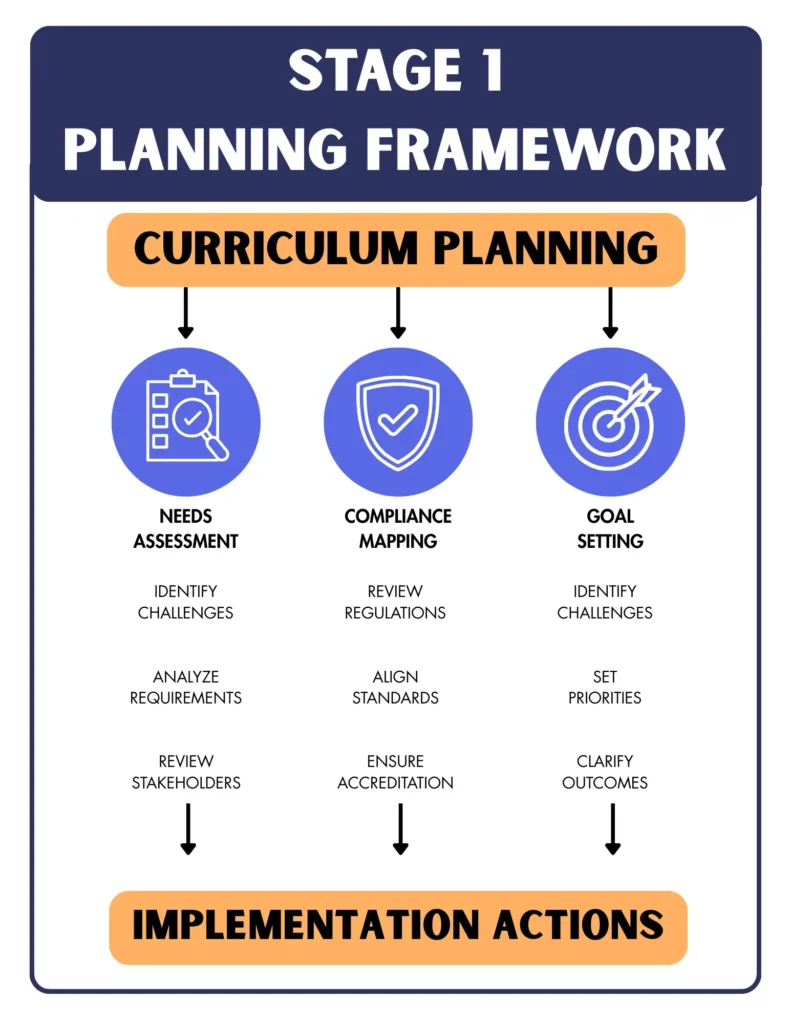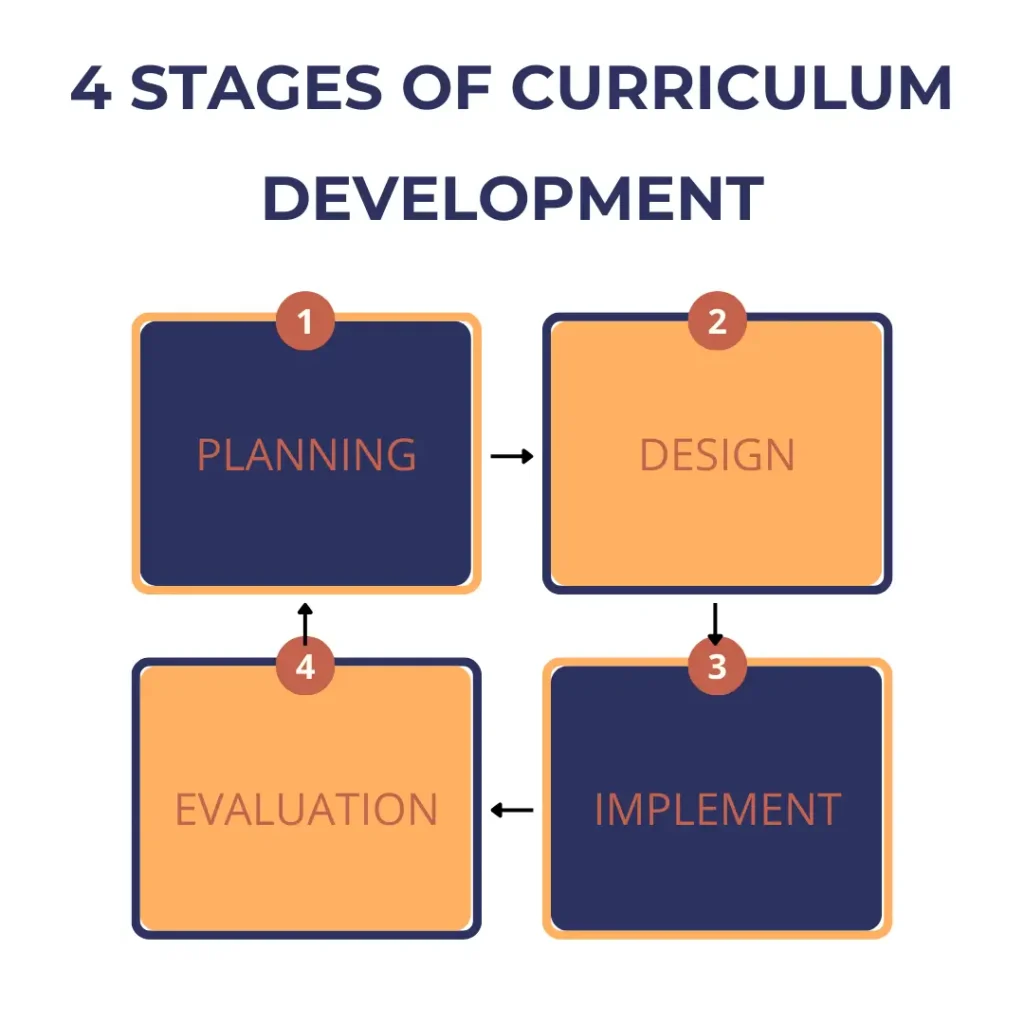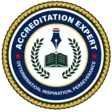
Curriculum is the backbone of education. Whether you’re launching a new degree program, seeking accreditation approval, or redesigning an outdated course catalog, understanding the 4 stages of curriculum development is critical.
At Accreditation Expert Consulting (AEC), we’ve helped more than 200 institutions, ranging from K-12 schools to universities, design curricula that are accreditor-ready, regulator-compliant, and student-centered.
In this guide, you’ll learn:
- The Four Classic Stages of Curriculum Development.
- How each stage applies to today’s regulatory and technological environment.
- Why these stages matter for accreditation, compliance, and long-term ROI.
📞 Ready to design your next program? Call 1-833-232-1400 or Contact Us to connect with our curriculum development specialists.
What Is Curriculum Development?
Curriculum development is the structured process of creating academic programs that align with regulatory standards, accreditation requirements, and workforce expectations.
It includes:
- Program architecture (PLOs, CLOs, credit/clock hours).
- Course design (syllabi, rubrics, assessments).
- Compliance exhibits for state approval and accreditation.
- Continuous improvement through analytics and faculty feedback.
In short, curriculum development is the process by which schools transform their vision into regulator-ready, student-focused programs.
The 4 Stages of Curriculum Development

Stage 1: Planning
Planning sets the foundation for curriculum design by identifying needs, setting goals, and ensuring compliance with relevant requirements.
Key steps:
- Needs assessment (student, employer, regulator).
- Market research and competitor analysis.
- Alignment with mission and accreditation standards.
- Early stakeholder engagement.
Stage 2: Design
Design translates goals into a structured framework of courses, learning outcomes, and instructional strategies.
Key steps:
- Define program learning outcomes (PLOs).
- Develop course learning outcomes (CLOs).
- Create syllabi, credit-hour calculations, and rubrics.
- Ensure accessibility (WCAG 2.2) and LMS compatibility.
This is where online program design and stackable credential pathways often come into play.
Stage 3: Implementation
Implementation is where the curriculum becomes reality in the classroom or LMS.
Key steps:
- Faculty training and adoption workshops.
- Building courses in the institution’s LMS (Canvas, Moodle, Populi, Blackboard).
- Pilot testing with a small group of learners.
- Setting up analytics dashboards for outcomes tracking.
At AEC, we also prepare submission-ready documentation for state agencies (BPPE, THECB, MDHE) and accreditors (DEAC, ACCET, COE, ABHES).
Stage 4: Evaluation
Evaluation ensures the curriculum delivers measurable results and remains compliant with accrediting bodies.
Key steps:
- Collect student performance and outcomes data.
- Gather faculty and stakeholder feedback.
- Conduct Subject Matter Expert (SME) reviews.
- Revise based on accreditation standards and workforce changes.
Evaluation closes the loop making curriculum development a continuous improvement cycle.

Why These Stages Matter for Accreditation
- Planning ensures compliance from the start.
- Design ties CLOs/PLOs to accreditor expectations.
- Implementation creates evidence for site visits and self-studies.
- Evaluation provides the documentation required for renewals and reporting.
Skipping or rushing a stage leads to accreditation risks: SER gaps, state delays, or program denials.
Common Challenges Institutions Face
- Incomplete market/needs assessments.
- Misaligned outcomes (CLOs not mapped to PLOs).
- Faculty resistance to LMS adoption.
- Lack of continuous evaluation processes.
At AEC, we solve these by integrating compliance expertise, faculty training, and future-proof design.
Case Studies & Examples
Case Study 1: K-12 District Curriculum Map
AEC redesigned a district-wide curriculum to align behavior intervention programs with state standards. Outcome: approval in the first review cycle.
Case Study 2: Online Master’s Program
AEC supported a university in developing a 36-credit online MBA. Outcome: DEAC approval with no conditions.
What are the 4 stages of curriculum development?
The four stages are planning, design, implementation, and evaluation. Together, they form a continuous cycle of improvement.
Why is curriculum planning important?
Planning ensures programs align with compliance requirements, market needs, and institutional mission before resources are invested.
How long does curriculum development take?
A certificate program may take 2–3 months, while a full degree can take 6–12 months, depending on accreditor requirements and LMS integration.
Who should be involved in curriculum development?
Academic leaders, faculty, compliance officers, and Subject Matter Experts (SMEs).
How does evaluation affect accreditation?
Evaluation produces the data and documentation that accreditors require for approvals and renewals.
Conclusion & Call to Action
Understanding the 4 stages of curriculum development is essential for building programs that are compliant, market-relevant, and sustainable.
At Accreditation Expert Consulting, we offer comprehensive curriculum development services that guide institutions through every stage, from planning to evaluation, with a focus on compliance, accreditation, and student success.
Schedule your 30-minute consultation today.
📧 info@AccreditationXpert.com
📞 1-833-232-1400
🌐 www.AccreditationXpert.com (That’s X-P-E-R-T)



